|
Software as a service

Software as a service
(SaaS)sometimes referred to as "on-demand software," is a software delivery model in which software and its associated data are hosted centrally (typically in the (Internet) cloud).
read more... |
Inventory Automation

Inventory management software is a computer-based system for tracking product levels, orders, sales and deliveries. It can also be used in the manufacturing industry to create a work order, bill of materials and other production-related documents.
read more...
|
|
|
Dennis Ritchie

Dennis MacAlistair Ritchie (b. September 9, 1941; found dead October 12, 2011),was an American computer scientist who "helped shape the digital era. He created the C programming language and, with long-time colleague Ken Thompson, the UNIX operating system.[1] Ritchie and Thompson received the Turing Award from the ACM in 1983, the Hamming Medal from the IEEE in 1990 and the National Medal of Technology from President Clinton in 1999. Ritchie was the head of Lucent Technologies System Software Research Department when he retired in 2007. He was the 'R' in K&R C and commonly known by his username dmr. read more...
|
|
|
iPhone 4S review

Introduction
The last thing you need is one that looks exactly like your ex. On a second thought, it's too early perhaps to end it. You two did look great together, your iPhone 4 and you. In fact you still do
read more...
|
Emotional Intelligence
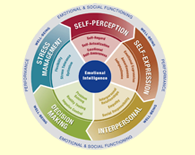
Emotional intelligence (EI) refers to the ability to perceive, control and evaluate emotions. Some researchers suggest that emotional intelligence can be learned and strengthened, while others claim it is an inborn characteristic.
read more...
|
|
|
|
Detailed Articles |
|
Software as a service
SaaS has become a common delivery model for most business applications, including accounting, collaboration, customer relationship management (CRM), enterprise resource planning (ERP), invoicing, human resource management (HRM), content management (CM) and service desk management.SaaS has been incorporated into the strategy of all leading enterprise software companies.
According to a Gartner Group estimate,[4] SaaS sales in 2010 have reached $10B, and are projected to increase to $12.1b in 2011, up 20.7% from 2010. Gartner Group estimates that SaaS revenue will be more than double its 2010 numbers by 2015 and reach a projected $21.3b. Customer relationship management (CRM) continues to be the largest market for SaaS. SaaS revenue within the CRM market is forecast to reach $3.8b in 2011, up from $3.2b in 2010.
The term software as a service (SaaS) is considered to be part of the nomenclature of cloud computing, along with infrastructure as a service (IaaS) and platform as a service (PaaS).
Architecture
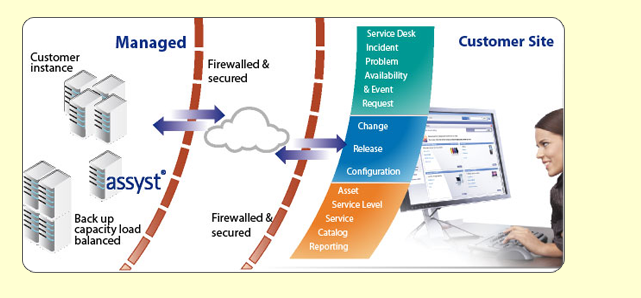
The vast majority of SaaS solutions are based on a multi-tenant architecture. With this model, a single version of the application, with a single configuration (hardware, network, operating system), is used for all customers ("tenants"). To support scalability, the application is installed on multiple machines (called horizontal scaling). In some cases, a second version of the application is set up to offer a select group of customers with access to pre-release versions of the applications (e.g., a beta version) for testing purposes. This is contrasted with traditional software, where multiple physical copies of the software—each potentially of a different version, with a potentially different configuration, and oftentimes customized—are installed across various customer sites.
While an exception rather the norm, some SaaS solutions do not use multi-tenancy, or use other mechanisms—such as virtualization—to cost-effectively manage a large number of customers in place of multi-tenancy. Whether multi-tenancy is a necessary component for software-as-a-service is a topic of controversy.
Characteristics
While not all software-as-a-service applications share all traits, the characteristics below are common among many SaaS applications:
Configuration and customization
SaaS applications similarly support what is traditionally known as application customization. In other words, like traditional enterprise software, a single customer can alter the set of configuration options (a.k.a., parameters) that affect its functionality and look-and-feel. Each customer may have its own settings (or: parameter values) for the configuration options. The application can be customized to the degree it was designed for based on a set of predefined configuration options.
Accelerated feature delivery
SaaS applications are often updated more frequently than traditional software,[11] in many cases on a weekly or monthly basis. This is enabled by several factors:
- The application is hosted centrally, so new releases can be put in place without requiring customers to physically install new software.
- The application only has a single configuration, making development testing faster.
- The application vendor has access to all customer data, expediting design and regression testing.
- The solution provider has access to user behavior within the application (usually via web analytics), making it easier to identify areas worthy of improvement.
Accelerated feature delivery is further enabled by agile software development methodologies. Such methodologies, which have evolved in the mid-1990s, provide a set of software development tools and practices to support frequent software releases.
Open integration protocols
Since SaaS applications cannot access a company's internal systems (databases or internal services), they predominantly offer integration protocols and application programming interfaces (APIs) that operate over a wide area network. Typically, these are protocols based on HTTP, REST, SOAP and JSON.
The ubiquity of SaaS applications and other Internet services and the standardization of their API technology has spawned development of mashups, which are lightweight applications that combine data, presentation and functionality from multiple services, creating a compound service. Mashups further differentiate SaaS applications from on-premises software as the latter cannot be easily integrated outside a company's firewall
Collaborative (and "social") functionality

Inspired by the success of online social networks and other so-called web 2.0 functionality, many SaaS applications offer features that let its users collaborate and share information.
For example, many project management applications delivered in the SaaS model offer—in addition to traditional project planning functionality—collaboration features letting users comment on tasks and plans and share documents within and outside an organization. Several other SaaS applications let users vote on and offer new feature ideas.
While some collaboration-related functionality is also integrated into on-premises software, (implicit or explicit) collaboration between users of different customers is only possible with centrally-hosted software.
Data escrow
Software as a service data escrow is the process of keeping a copy of critical software-as-a-service application data with an independent third party. Similar to source code escrow, where critical software source code is stored with an independent third party, SaaS data escrow is the same logic applied to data within a SaaS application. It allows companies to protect and insure all the data that resides within SaaS applications, protecting against data loss.
There are many and varied reasons for considering SaaS data escrow including concerns about vendor bankruptcy, unplanned service outages and potential data loss or corruption. Many businesses are also keen to ensure that they are complying with their own data governance standards or want improved reporting and business analytics against their SaaS data. A research conducted by Clearpace Software Ltd. into the growth of SaaS showed that 85 percent of the participants wanted to take a copy of their SaaS data. A third of these participants wanted a copy on a daily basis.
Article Source
|
|
|
Inventory management software
Companies use inventory management software to avoid product overstock and outages. It is a tool for organizing inventory data that before was generally stored in hard-copy form or in Microsoft Excel spreadsheets.
Inventory management software is a big investment, and many wonder if it's worth it. Small to mid-sized businesses, especially, need to know that the investment they will be making is worth it in the long run. Inventory management software also comes in various configurations; some are industry specific, and many of them can be custom fit to accommodate special circumstances.
What Are the Benefits of Inventory Management Software?

Inventory management software is a big investment, and many wonder if it's worth it. Small to mid-sized businesses, especially, need to know that the investment they will be making is worth it in the long run. Inventory management software also comes in various configurations; some are industry specific, and many of them can be custom fit to accommodate special circumstances.
Start Early

When a business is small or has a small inventory, the bookkeeping needs can usually be handled fairly easily by the sole proprietor or a helper, but as a business grows there is usually a need for better organization and more detailed record-keeping methods. Inventory management software can be very useful to employ when a business is small so that criteria and specifications can be established while the scope of the effort is still manageable.
Purpose
Good inventory management is essential to the success of a business, both for its own records and for records that will be reviewed by the IRS and other outside entities. If inventory is not tracked, it is impossible to accurately identify where money is being made and lost or to learn how to improve processes within a company to help it grow. Inventory management software aids management to easily track company investments and see where improvements might be made.
Time Saving Benefits
Inventory management software helps the inventory manager to save time by keeping calculations up-to-date giving the manager easy access to the numbers that are needed for reporting and restocking information. These figures can easily be accessed by Purchasing for fast, up-to-the-minute information on what will need to be bought. Executives can easily access this information for help in determining where a company makes and loses money.
Money Saving Benefits

Inaccurate bookkeeping in a company's inventory can result in over-purchasing and under-purchasing of products that the company uses or sells. Either of these situations leaves room for loss; the under-purchased inventory runs out and stops production or sale of that item and over-producing causes an overage that can go to waste. The time-saving aspects of inventory management software save vast amounts of money, keeping production running smoothly and reducing personnel costs associated with record-keeping because much of the software is automated.
Automation

Inventory management software uses automation for many of its basic functions. Numbers can be simply "plugged" into specified areas and the software makes all the calculations. For instance, a person in the sales department will punch in a product code and quantity ordered by a customer to generate a receipt for the sale. The numbers will then be automatically entered into inventory, taking the product out of stock, adding the dollar amount to sales and calculating the gross profit made on that sale. This information is broken down and reported to the accounting department, and the purchasing department is notified that the sale has been made and stock will need to be reordered.
Potential for Growth
When purchasing inventory management software, the buyer should consider the current state of the company and what it may become in the future. The software is a big expense, but identifying how it can help facilitate the growth of the company is a critical step in the decision process. Many times buyers underestimate the success of their business and end up having to re-invest in new software a couple of years down the line. This can be a major, unnecessary expense and an even larger, avoidable hassle--transferring all the data to a new system .
Article Source
|
|
|
Dennis Ritchie
C and Unix
Ritchie was best known as the creator of the C programming language, a key developer of the UNIX operating system, and co-author of The C Programming Language, and was the 'R' in K&R (a common reference to the book's authors Kernighan and Ritchie). Ritchie worked together with Ken Thompson, the scientist credited with writing the original Unix; one of Ritchie's most important contributions to Unix was its porting to different machines and platforms.
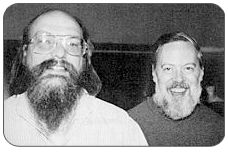
The C language is widely used today in application, operating system, and embedded system development, and its influence is seen in most modern programming languages. UNIX has also been influential, establishing concepts and principles that are now precepts of computing.
Ritchie was elected to the National Academy of Engineering in 1988 for "development of the 'C' programming language and for co-development of the UNIX operating system.
Awards
Turing Award
In 1983, Ritchie and Thompson jointly received the Turing Award for their development of generic operating systems theory and specifically for the implementation of the UNIX operating system. Ritchie's Turing Award lecture was titled "Reflections on Software Research.
IEEE Richard W. Hamming Medal
In 1990, both Ritchie and Thompson received the IEEE Richard W. Hamming Medal from the Institute of Electrical and Electronics Engineers (IEEE), "for the origination of the UNIX operating system and the C programming language.
Fellow of the Computer History Museum
In 1997, both Ritchie and Thompson were made Fellows of the Computer History Museum, "for co-creation of the UNIX operating system, and for development of the C programming language.
National Medal of Technology
On April 21, 1999, Thompson and Ritchie jointly received the National Medal of Technology of 1998 from President Bill Clinton for co-inventing the UNIX operating system and the C programming language which, according to the citation for the medal, "led to enormous advances in computer hardware, software, and networking systems and stimulated growth of an entire industry, thereby enhancing American leadership in the Information Age.
Japan Prize
In 2011, Ritchie, along with Thompson, was awarded the Japan Prize for Information and Communications for his work in the development of Unix operating system.
Death and legacy
Ritchie was found dead on October 12, 2011, at the age of 70 at his home in Berkeley Heights, New Jersey, where he lived alone. First news of his death came from his former colleague, Rob Pike.The cause and exact time of death have not been disclosed.He had been in frail health for several years following treatment for prostate cancer and heart disease.His death came a week after the death of Steve Jobs; although Ritchie's death did not receive as much media coverage, computer historians such as Paul E. Ceruzzi said his influence was comparable.
Notable books
- Unix Programmer's Manual (1971).
- The C Programming Language (1978 with Brian Kernighan; see K&R).
Article Source
|
|
|
iPhone 4S review: Fast 4ward
iPhone 4S owners, this is between you and your phone's inner voice - Siri. iPhone 4 owners, this is between you and your inner voice. Yes, we know your inner voice is telling you to go for the NEXT iPhone. And no, we're not telling you not to listen to it. Just hang on. Maybe this review will help.

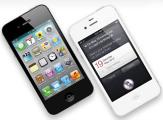


But let's go back and start at the beginning. Every year, a new iPhone is raising the bar for the industry. Usually, it's half a point up - a full point on special occasions. The iPhone 4 was such a special occasion. The iPhone 4S is the half-point type. There probably is nothing special about it. At least, not on the outside.
No, we didn't mean that. The iPhone 4S is still one of the best looking smartphones we've seen. There's just nothing new on the outside to suggest the amount of work done on the innards. And the iOS 5 is only half of the story.
The iPhone 4S is promoted to the dual-core league and has more powerful graphics. There's a major boost to imaging too, with 8MP stills and 1080p video. And on top of it all, Apple try to take voice recognition to a new level with Siri. All in all, the iPhone 4S is a completely different phone under the hood. A brand new device that has been developed for months.
Key features
- iOS 5 with iCloud integration
- Quad-band GSM and quad-band 3G support with 14.4 Mbps HSDPA and 5.76 Mbps HSUPA
- Dual-band CDMA and CDMA2000 1xEV-DO support
- 3.5" 16M-color LED-backlit IPS TFT capacitive touchscreen of 640 x 960 px resolution
- Scratch-resistant glass front and rear, with fingerprint-resistant coating
- 1GHz dual-core ARM Cortex A9 CPU, PowerVR SGX543MP2 GPU, Apple A5 SoC
- 512MB of RAM
- Voice recognition, Siri virtual assistant
- 8 MP autofocus camera with LED flash and touch focus
- 1080p video recording at 30fps
- Wi-Fi 802.11b/g/n, Wi-Fi hotpsot
- GPS with A-GPS connectivity; digital compass
- 16/32/64GB storage options
- Accelerometer, proximity sensor and a three-axis gyro sensor
- Active noise cancellation with a dedicated secondary microphone
- Standard 3.5 mm audio jack, stereo Bluetooth v4.0
- Excellent audio quality
- Slim waistline at only 9.3mm
- Secondary front-facing VGA camera
- Built-in Picture and Video editors
- Rich AppStore
- New antenna design and improved signal reception in poor signal areas
Main disadvantages
- MicroSIM card support only
- No Flash support in the web browser
- No true multitasking for all applications
- FaceTime video calls work only over Wi-Fi
- No file transfer over Bluetooth or USB Mass Storage mode (independent from iTunes)
- No FM radio
- No stereo speakers
- No microSD card slot
- Non-user-replaceable battery
- Siri still a beta, location services not enabled outside US
- Stuck with iTunes for loading content
On the other hand, it’s a phone you've already seen. You probably have it in the pocket as we speak. And the list of cons does sound familiar, doesn't it? Ah, there you go. We knew you’d notice. The last thing Apple needed was another Antennagate – and as far as we can tell, they’ve had it sorted out.
Apple will probably let this one slip by with a shy, almost apologetic, “Don’t mention it”. But they’ll certainly feel entitled to at least some gratitude for the other stuff in the new iPhone 4S. Things like the dual core CPU and upgraded GPU, iOS 5 and iCloud integration, the new cameraphone credentials and Siri, the she-Jeeves of the digital age.




The iPhone 4S is here, and ready for our traditional hardware checkup. Follow us on the next page where we intend to fast-forward through the familiar design. Just don’t put money on it. It’s a phone we may fall back in love with before we know it.
Article Source
|
|
|
 Emotional Intelligence Emotional Intelligence
Since 1990, Peter Salovey and John D. Mayer have been the leading researchers on emotional intelligence.
In their influential article "Emotional Intelligence," they defined emotional intelligence as, "the subset of social intelligence that involves the ability to monitor one's own and others' feelings and emotions, to discriminate among them and to use this information to guide one's thinking and actions" (1990).
 The Four Branches of Emotional Intelligence The Four Branches of Emotional Intelligence
Salovey and Mayer proposed a model that identified four different factors of emotional intelligence: the perception of emotion, the ability reason using emotions, the ability to understand emotion and the ability to manage emotions.
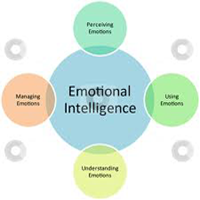
- Perceiving Emotions: The first step in understanding emotions is to accurately perceive them. In many cases, this might involve understanding nonverbal signals such as body language and facial expressions.
- Reasoning With Emotions: The next step involves using emotions to promote thinking and cognitive activity. Emotions help prioritize what we pay attention and react to; we respond emotionally to things that garner our attention.
- Understanding Emotions: The emotions that we perceive can carry a wide variety of meanings. If someone is expressing angry emotions, the observer must interpret the cause of their anger and what it might mean. For example, if your boss is acting angry, it might mean that he is dissatisfied with your work; or it could be because he got a speeding ticket on his way to work that morning or that he's been fighting with his wife.
- Managing Emotions: The ability to manage emotions effectively is a key part of emotional intelligence. Regulating emotions, responding appropriately and responding to the emotions of others are all important aspect of emotional management.
 Measuring Emotional Intelligence Measuring Emotional Intelligence
"In regard to measuring emotional intelligence – I am a great believer that criterion-report (that is, ability testing) is the only adequate method to employ. Intelligence is an ability, and is directly measured only by having people answer questions and evaluating the correctness of those answers." --John D. Mayer
A self-report test designed to measure competencies including awareness, stress tolerance, problem solving, and happiness. According to Bar-On, “Emotional intelligence is an array of noncognitive capabilities, competencies, and skills that influence one’s ability to succeed in coping with environmental demands and pressures.”
Multifactor Emotional Intelligence Scale (MEIS)
An ability-based test in which test-takers perform tasks designed to assess their ability to perceive, identify, understand, and utilize emotions.
Seligman Attributional Style Questionnaire (SASQ).
Originally designed as a screening test for the life insurance company Metropolitan Life, the SASQ measures optimism and pessimism.
Emotional Competence Inventory (ECI)
Based on an older instrument known as the Self-Assessment Questionnaire, the ECI involves having people who know the individual offer ratings of that person’s abilities on a number of different emotional competencies.
Article Source
|
|
Itech Solutions |
|
























 Emotional Intelligence
Emotional Intelligence